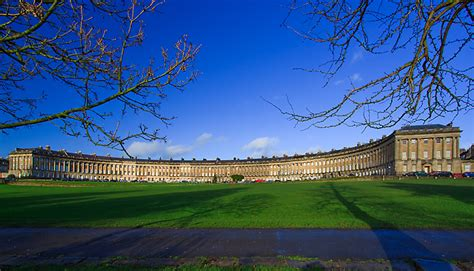This is our last Round Robin blog for 2025. As in the past couple of years, we’ve been asked to ‘gift’ our writing to our readers.
I don’t know about other authors, but I like to switch genres. The pundits say that’s not a good idea. Still, after writing several historical romances and then contemporary western romances, I gave in to some gentle arm-twisting from my publisher to try my hand at cozy mysteries.
The first book, A Murder in the Meadow, came out in September. The second in the series, A Body in the Brewery, is due out on February 1st, 2026.
I have to say I am finding the cozies fun to write, but for our blog this
year, I’ve chosen to offer an excerpt from an incomplete women’s fiction that I’ve
been tinkering with for a few years. I have never written in the first person or the present tense before, and I find it a challenge.
The premise is that the main character, Jess, leaves
her philandering husband, Michael, on her 50th birthday. They have
two adult daughters who are living their own lives. Jess takes her Aunt Margaret’s
offer of her holiday cottage in St. Ives, Cornwall. While there, Jess meets
Iain, a man ten years her junior.
Not quite divorced, Jess is in two minds about having
a summer fling. Spending time with Iain and his friends shows her what life
could be. Her summer progresses with revelations about herself and her family,
and a conclusion that is her decision, and hers alone. I hope you enjoy this
excerpt.
EXCERPT FROM AN UNTITLED WORK IN PROGRESS by Victoria Chatham.
“You’ve got a boyfriend, haven’t you?” Michael
blusters. “That’s why you’re here.”
“No,” I say. “I’m here because I’ve left you.”
“Left me? Why?” Michael looks pained yet
puzzled.
“One affair too many.” I try to stay cool and
calm as I meet his eyes, but my stomach churns. “Aunt Margaret offered the
cottage, and with the girls away, I saw no reason not to take her up on it.”
Before Michael can respond, there is a knock
on the kitchen door at the same time as it opens, and Iain breezes in as if he owns the place. I swear my heart misses a beat, and I instantly wish he were not quite so open and easy-going.
“I suppose you now have a boyfriend, huh?”
Did Michael always look this ugly when he sneers, or am I only seeing it now that I am away from him?
“No, no boyfriend.” I maintain my false front of calmness as I pull a bunch of celery out of my shopping basket.
“Sorry to barge in.” Iain grins at us but shows no sign of being sorry. “You left your No. 3 brushes in the shop.”
“Thanks.” I take the slim packet of brushes
from him. “I haven’t unloaded all the shopping yet and would soon have missed
them.”
Iain nods to Michael in that impersonal way
that men have. Michael regards him through narrowed eyes and purses his lips. They pucker like dried prunes. How did I ever manage to kiss him?
“Do you always make personal deliveries?” Michael asks.
“Nope,” Iain says. “Only if I have to pass
someone’s house on my way to the pub. See you around, Jess.”
He leaves as breezily as he
arrived. I am a little weak at the knees and try to calculate what might come
next.
“It’s him, isn’t it?” Michael hisses.
“Iain? Good grief, Michael, are you blind?
That man’s far too pretty to be straight. Besides, I’ve seen what his partner,
Stanley, can do with a meat cleaver.”
Some of Michael’s bluster fades away. I
say a silent prayer for forgiveness in casting aspersions on Iain’s
character, but I didn’t lie about Stanley’s skill with a meat cleaver or his being Iain’s partner. Prevaricate a little, maybe, in not saying they were
business partners, but not an outright lie. Aunt Margaret would be proud of me.
Michael watches me delve into the basket and take
out lettuce, tomatoes, and cucumbers – all the fresh ingredients for a salad.
“You’re still eating that weird food?” he
comments.
“Yes, I am, and I’m enjoying it very much. I’m neither going to feed you
nor argue with you, so there's no point in your hanging around, Michael.”
He stares at me as if he doesn't quite believe me, then turns on his heel.
END
OF EXCERPT
I would like to thank everyone who follows and shares our Round Robin blog. All that is left now is to wish everyone a Happy Christmas, or holiday, or however you and your families celebrate the season.
Skye Taylor http://www.skye-writer.com/blogging_by_the_sea
Anne Stenhouse http://annestenhousenovelist.wordpress.com (Graham)
Connie Vines http://mizging.blogspot.com/
Diane Bator https://escapewithawriter.wordpress.com/
Helena Fairfax http://www.helenafairfax.com/blog
Sally Odgers https://behindsallysbooksmark2.blogspot.com
Dr Bob Rich https://wp.me/p3Xihq-3BZ












 The Regency Town House at 13 Brunswick Square, is a grade 1 listed terraced home in the heart of Brunswick Town, a Georgian estate in the City of Brighton & Hove on the Sussex coast.
The Regency Town House at 13 Brunswick Square, is a grade 1 listed terraced home in the heart of Brunswick Town, a Georgian estate in the City of Brighton & Hove on the Sussex coast.










